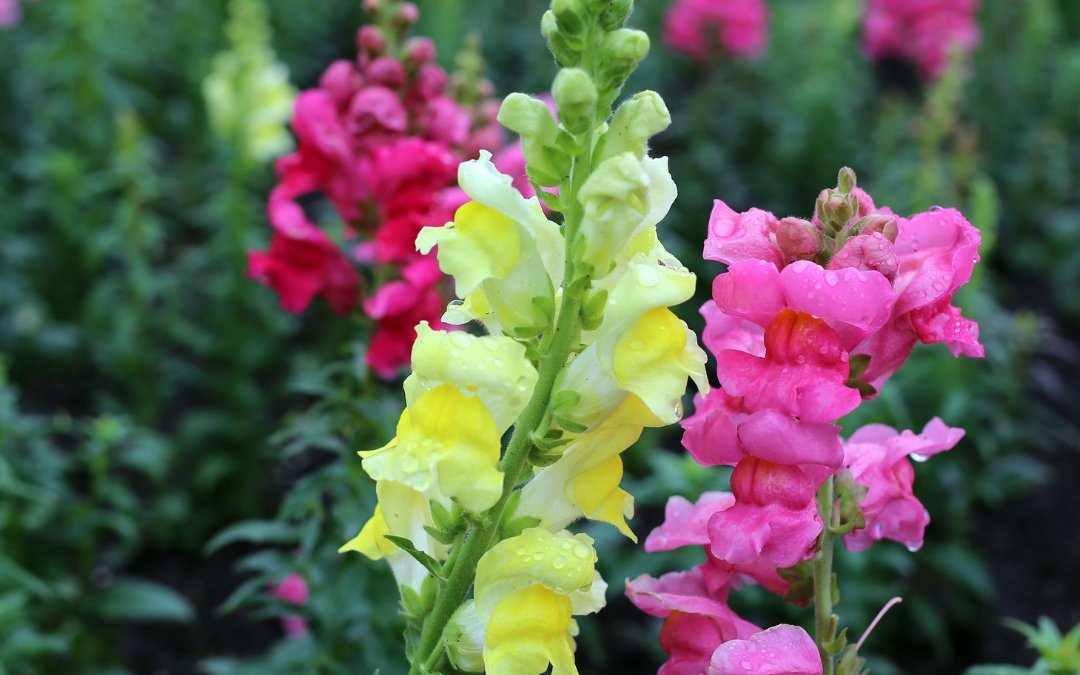Introduction: What Makes Snapdragons a Must-Have in Your Garden?
Snapdragons are perfect for any garden. Their beautiful and vibrant colours, long blooming season and easy-to-grow nature, make them a must-have. With the right growing tips and care, snapdragons can bring beauty and life to your garden all year round. In this article, we’re here to provide helpful information on successfully growing your snapdragons at home.
About Snapdragons

The snapdragon is a type of flower with four or five yellow, white, purple, and blue lobes. In addition to having a long stem that can grow up to three feet tall, the flower also has many tiny leaves along the stem.
Snapdragons were initially found in mountainous terrain stretching from Europe to North Africa, American and Canadian regions. Belonging to the Antirrhinum family, snapdragons were introduced to the Americas in the early 1800s.
Fun fact: Resembling the face of a dragon, squeezing the base on the flower can create the illusion of a dragon opening and closing its mouth as it’s pressed lightly.
Snapdragon Growing Conditions

To get the best results when planting snapdragons, it is important to understand the ideal soil conditions and when to sow the seeds. Knowing the optimal depth for planting will ensure that your snapdragon plants have all of the necessary nutrients and moisture they need to thrive. With some knowledge, you can have a vibrant display of snapdragons in no time.
When to Sow: Direct Outdoors, Late Spring Bloom
| Sprouts: | 7-14 days |
| Bloom: | Late spring-early summer |
| Location: | Full-partial sun |
| Difficulty: | Easy |
| Lifecycle: | Perennial |
| Planting depth: | 1″ |
| Seed Spacing: | Surface |
| Plant spread: | Approx. 8″ |
How to Plant Snapdragons
1.) For optimal results, starting your seeds indoors 6-8 weeks before the last spring frost is usually recommended.
2.) Space seeds at a distance of 1 inch and cover lightly.
3.) Keep the soil consistently moist and exposed to ample light until you transplant it outdoors.
4.) Once the seedlings have grown big enough, transfer them 2 inches apart into bigger containers or separate pots.
5.) For optimal growth, place your transplanted flowers in soil that is nutrient-rich and has good drainage, as well as being exposed to direct sunlight.
Tip: To keep flowers blooming longer, trim away any spent stalks after flowering. This encourages more blooms throughout the season.
Harvesting Snapdragons

1.) To successfully cut snapdragons, use garden shears and snip them at a 45-degree angle, just above the leaf node. The best time to do this is early in the day when the flowers from the lower one-fourth or one-third of the spike have blossomed.
2.) Then fill a clean vase with about half to two-thirds of cold water and add your favourite flower preservative.
3.)To keep your snapdragons fresh, start by taking each one out of the water and cutting 1 inch off the stem at a 45-degree angle while running warm water. Put them inside a vase immediately and set them in a cool, dark place away from direct sunlight.



